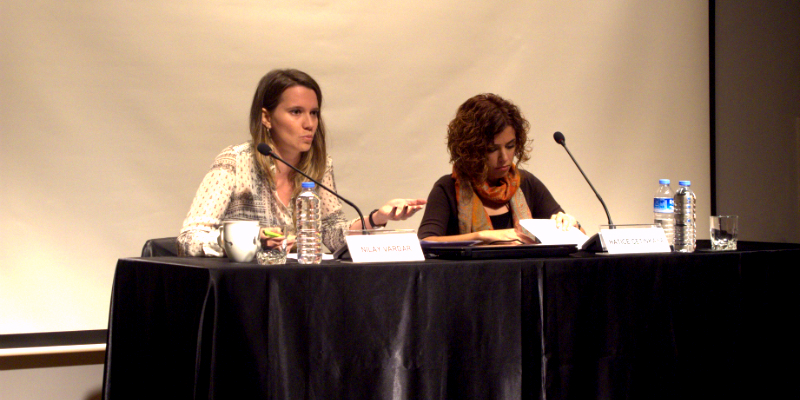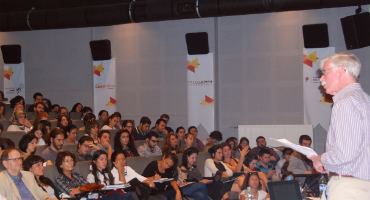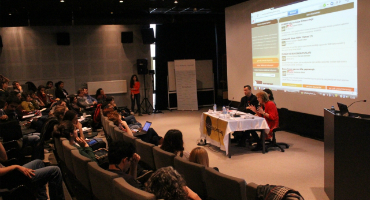The fourth event of thematic workshop series on discriminatory discourse in the media and rights-based approach to journalism, entitled ‘Discrimination against Roma: Representation in the Media’ was organized in Havak Hall, Anarad Hığutyun Building on November, 5, 2015 by Hrant Dink Foundation. The workshop was held by the contributions of the speakers named Nilay Vardar from Bianet and Hatice Çetinkaya from Zero Discrimination Association.
Hatice Çetinkaya from Zero Discrimination Association, talked about the projects run by their civil society organization to combat for rights of Roma groups. The examples of different types of discriminatory discourse against Roma people in Turkey were presented and a particular focus on the problems of access to education rights which is interrelated to discrimination and poverty were discussed. The effects of urban transformation which caused housing problem among Roma groups were emphasized. Çetinkaya stated that the Roma Opening initiated in 2010 regarding the improvement of situation of Roma people in Turkey, had a positive impact on organization and visibility of Roma people; however since not many of Roma civil society organizations have a particular focus on rights-based approach, the number of research on discrimination are limited. Çetinkaya also discussed how the already existing discrimination towards the Roma people reflects in the media. Moreover, Çetinkaya addressed the continuity of human rights violations due to the reconstruction of the stereotypes regarding the Roma people through TV shows and programs because of their rating concerns. He ended his presentation with emphasizing that media’s choice to depict Roma people only in association with entertainment instead of dealing with the ongoing discrimination and violation of rights they suffer can be explained with media’s low attention to serious concerns of Roma people.
Nilay Vardar from Bianet, as a journalist making news about Roma people’s social life, problems and Roma civil society organizations, shared her experiences. Vardar said that, while making news, she gives priority to make the violation of rights visible. Vardar also stated that she gives particular attention to making news on the basis of equal citizenship while producing news regarding any social issue, not only news about Roma people. After sharing her experience as a journalist, the discussion continued with Vardar presenting her analysis on how Roma people are represented in mainstream media. Vardar evaluated the representation of Roma people in the mainstream media in three categories: 1- News related with crime 2- Presenting the visuals of Roma people only as ‘dancers’ (göbek atan) and presenting Roma people in association with entertainment and not taking them seriously 3- Disregarding the discriminatory practices against Roma people in Turkey, but underlining the discrimination in other countries and making them visible. Vardar also stated that news are constructed in a way trivializing or concealing the human rights struggle of the Roma people even when the content is directly about this struggle itself and they left the image of the Roma people as ‘dancers’ (göbek atan) in the minds of the readers.
‘Discrimination against Roma People: Representation on Media’ workshop focused on how the lack of rights-based approach in news about Roma people reproduces and even reinforces the human rights violations. Improving the capacity of civil society organizations working with rights-based approach, fostering a rights-based approach in other civil society organizations already working in the field, and cooperation of civil society and media were suggested as ways of struggling against the rights violations Roma people underwent in the media and social life.





